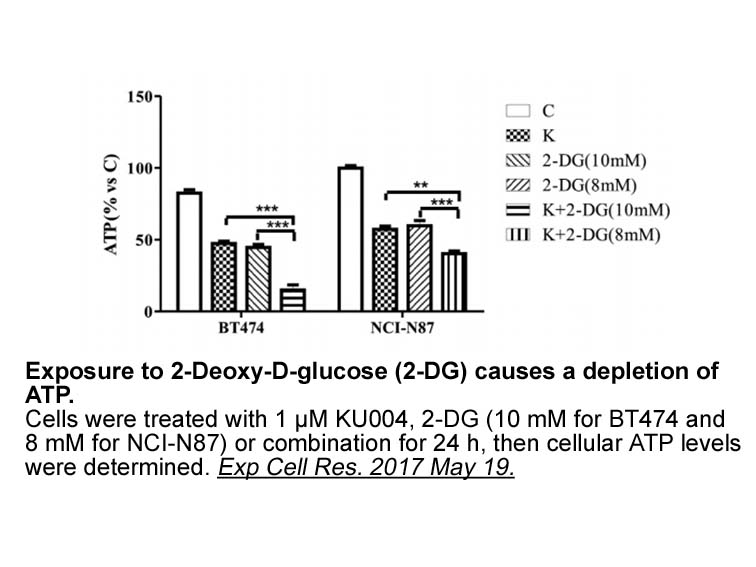Archives
br Results br Discussion We identified a novel heterozygous
Results
Discussion
We identified a novel, heterozygous nonsense SCN5A mutation, Q779X, in a family with overlapped phenotype with progressive conduction defects and BrS. The proband suffered from SSS at the age of three, and subsequent ventricular fibrillation with a coved type Brugada ECG pattern at age of 13 was detected. Mild prolongation of the HV intervals had been observed at the age of four, indicating the presence of an extensive conduction delay. At 9 years of age, a right precordial ECG abnormality became gradually significant.
SSS is complicated in children with a left isomerism heart [4], or on surgical intervention for congenital heart disease [5]. It is also seen in channelopathies such as long QT syndrome, BrS [6], or as a part of a progressive cardiac conduction disease [7]. SCN5A mutations are known to be associated with all these phenotypes. Loss-of-function SCN5A mutants have been shown to be related to BrS as well as profound bradyarrhythmias [8]. In children with these mutations, prolonged cardiac conduction intervals have been reported to emerge as the most common manifestation of the disease, and are accompanied with both atrial and ventricular arrhythmias [2]. Three genotype-positive children in our family shared similar clinical characteristics.
The intravenous challenge test with a Na+ channel blocker was conducted in two of our genotype-positive members, and the drug produced PR prolongation (Table 1 and Fig. 3). The PR prolongation, which results from common loss-of-function SCN5A mutation, was enhanced by a Na+ channel blocker in our family members.
The heterozygous nonsense SCN5A mutation of the family was at amino abscisic acid 779 that lies in the middle of the cytoplasmic loop of domain 2 (Fig. 4, topography). A missense SCN5A mutation at the same position, Q779K, was previously reported for a Japanese pedigree of long QT syndrome, which harbored a compound heterozygous mutation, E284K, in KCNQ1[9]. A change in the residual charge from neutral (Q: glutamine) to basic (K: lysine) may cause a gain-of-function outcome. In contrast, the nonsense mutation at the same codon leads to NMD [3], thereby exerting severe loss-of-function effects.
The index boy presented progressive conduction defects and VF during earlier stage of hi s life. His mother and two siblings had similar ECG abnormalities at rest and when challenged with Na-channel blockers, but remained asymptomatic in spite of the same nonsense SCN5A mutation. This variation in phenotypic severity could be partially explained by the gender difference, because BrS is predominantly noted in males as the disease has an autosomal-dominant mode of transmission [10].
The reason for the variation in phenotypic severity between the index boy and his elder brother is unknown. Both had the same SCN5A mutation, however, the proband had additional DSG2 and SCN1B variants. These variants could be modifiers for the phenotype. DSG2 is located on chromosome 18, and encodes a calcium-binding transmembrane glycoprotein component of desmosomes, desmoglein 2. Few mutations in DSG2 have been shown to decrease the Na+ current, leading to conduction disturbances, and are associated with arrhythmogenic right ventricular dysplasia [11]. The SCN1B gene encodes a beta-1 subunit of the sodium channel that is known to modulate the sodium channel through a non-covalent interaction with the alpha-subunit encoded by SCN5A. MAF for each variant was not low, indicating that they were not pathogenic mutations; although, the pathogenicity estimation scores of SCN1B-S248R and R250T were relatively high (Table 2). Therefore, the phenotype variation among the SCN5A-Q779X carriers could be partially explained by modifier effects of these variants, in addition to the gender difference.
s life. His mother and two siblings had similar ECG abnormalities at rest and when challenged with Na-channel blockers, but remained asymptomatic in spite of the same nonsense SCN5A mutation. This variation in phenotypic severity could be partially explained by the gender difference, because BrS is predominantly noted in males as the disease has an autosomal-dominant mode of transmission [10].
The reason for the variation in phenotypic severity between the index boy and his elder brother is unknown. Both had the same SCN5A mutation, however, the proband had additional DSG2 and SCN1B variants. These variants could be modifiers for the phenotype. DSG2 is located on chromosome 18, and encodes a calcium-binding transmembrane glycoprotein component of desmosomes, desmoglein 2. Few mutations in DSG2 have been shown to decrease the Na+ current, leading to conduction disturbances, and are associated with arrhythmogenic right ventricular dysplasia [11]. The SCN1B gene encodes a beta-1 subunit of the sodium channel that is known to modulate the sodium channel through a non-covalent interaction with the alpha-subunit encoded by SCN5A. MAF for each variant was not low, indicating that they were not pathogenic mutations; although, the pathogenicity estimation scores of SCN1B-S248R and R250T were relatively high (Table 2). Therefore, the phenotype variation among the SCN5A-Q779X carriers could be partially explained by modifier effects of these variants, in addition to the gender difference.
Conclusion
SCN5A-positive proband and the female members of the family with overlap syndrome phenotype carried additional variants in SCN1B and DSG2. In contrast, these variants were absent in their SCN5A-positive male family member who showed a milder phenotype. Therefore, in addition to the gender difference, SCN1B and DSG2 variants could be modifiers of BrS and SSS phenotypic expression, and our results may help explain the enigma of variable phenotypes for those with SCN5A mutations.